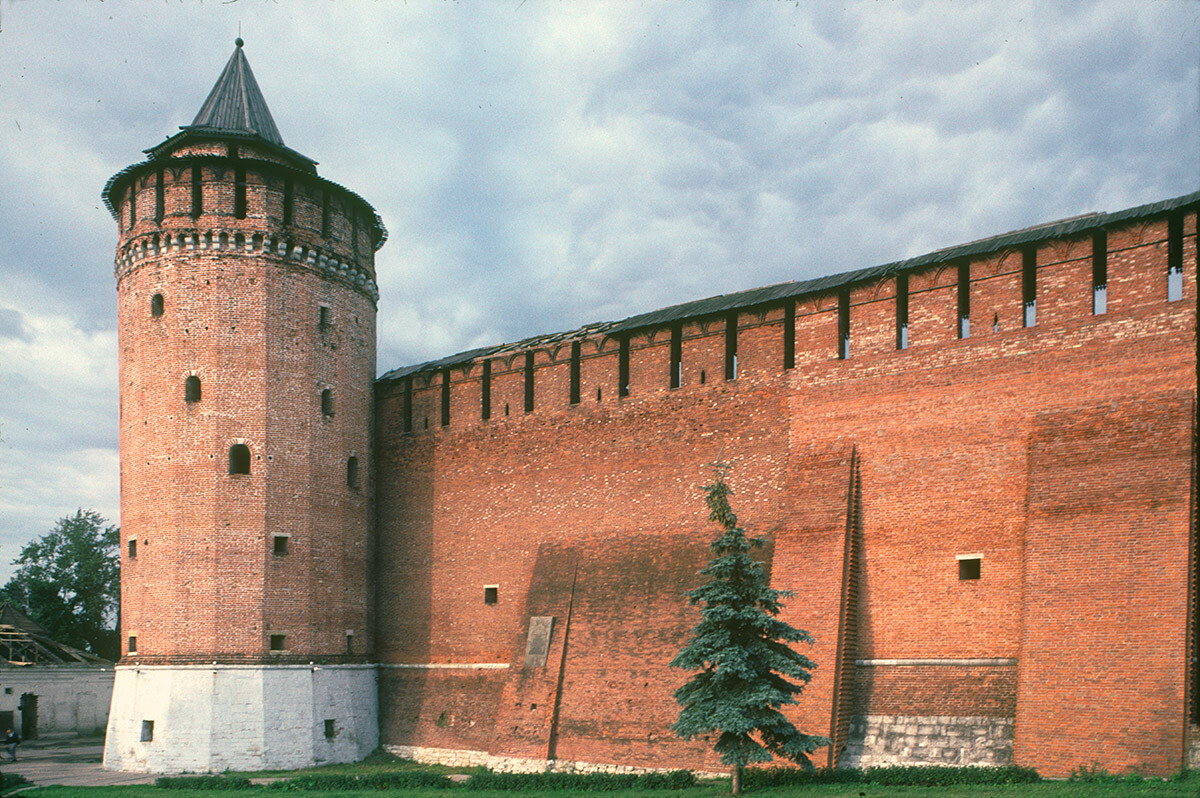
Kolomna kremlin (fortress). Kolomna (Marinka) Tower. August 19, 2003.
William BrumfieldAt the beginning of the 20th century, Russian chemist and photographer Sergey Prokudin-Gorsky developed a complex process for vivid, detailed color photography. His vision of photography as a form of education and enlightenment was demonstrated with special clarity through his photographs of architectural monuments in historic sites throughout the Russian heartland.
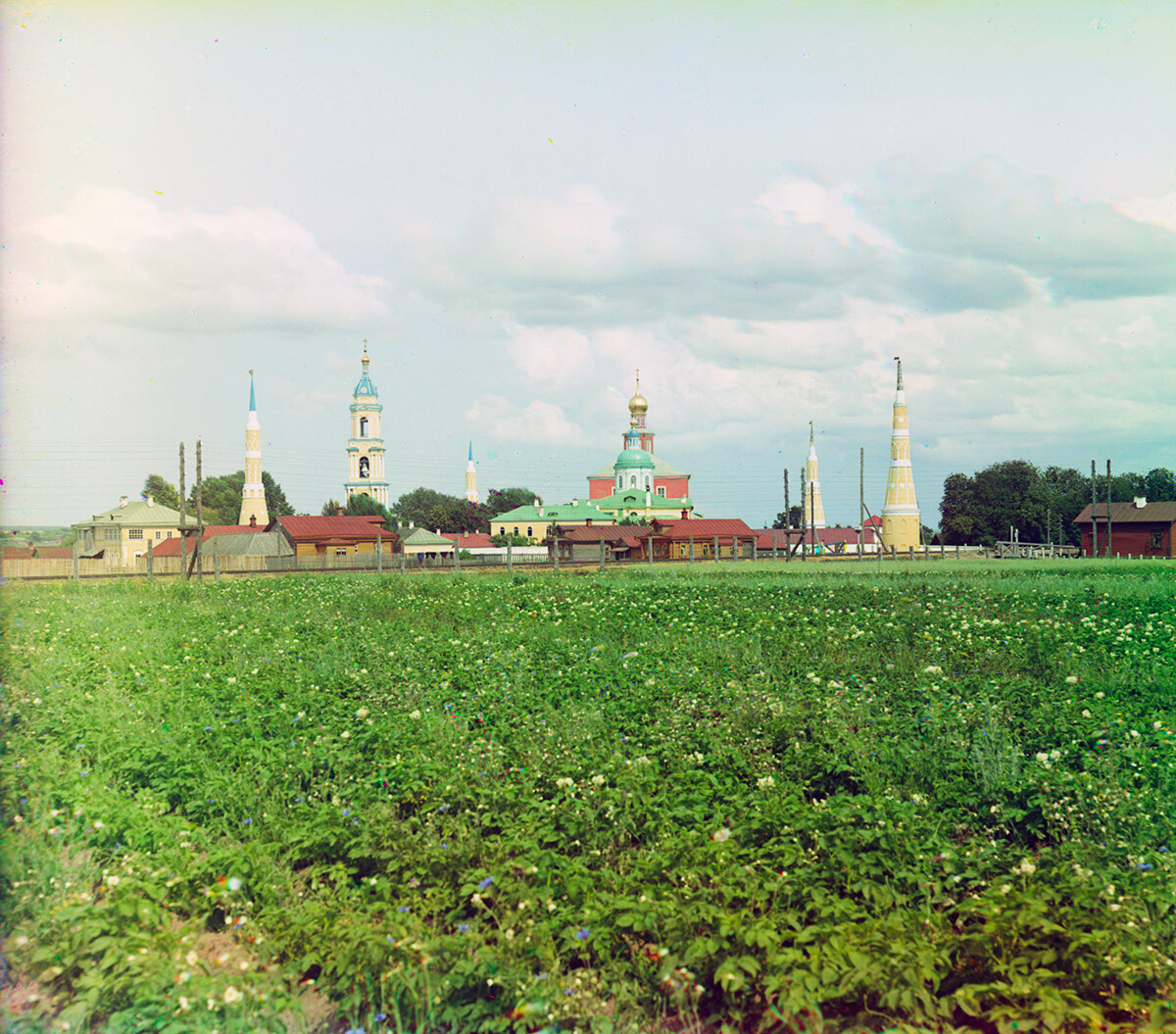
Old Golutvin Epiphany Monastery, west view. From left: northwest corner tower, bell tower, NE corner tower, Epiphany Cathedral & St. Sergius Church, SE corner tower, SW corner tower. Foreground: railroad & potato field. Summer 1912.
Sergey Prokudin-GorskyAmong the sites visited by Prokudin-Gorsky in 1912 was the Epiphany-Golutvin Monastery (known after 1800 as the Old Golutvin Monastery) near Kolomna, located some 115 km south of Moscow in the direction of Ryazan. Although Kolomna is one of the most appealing of Russia’s provincial cities, there is no record that Prokudin-Gorsky photographed the town itself, just to the north of the Old Golutvin Monastery.
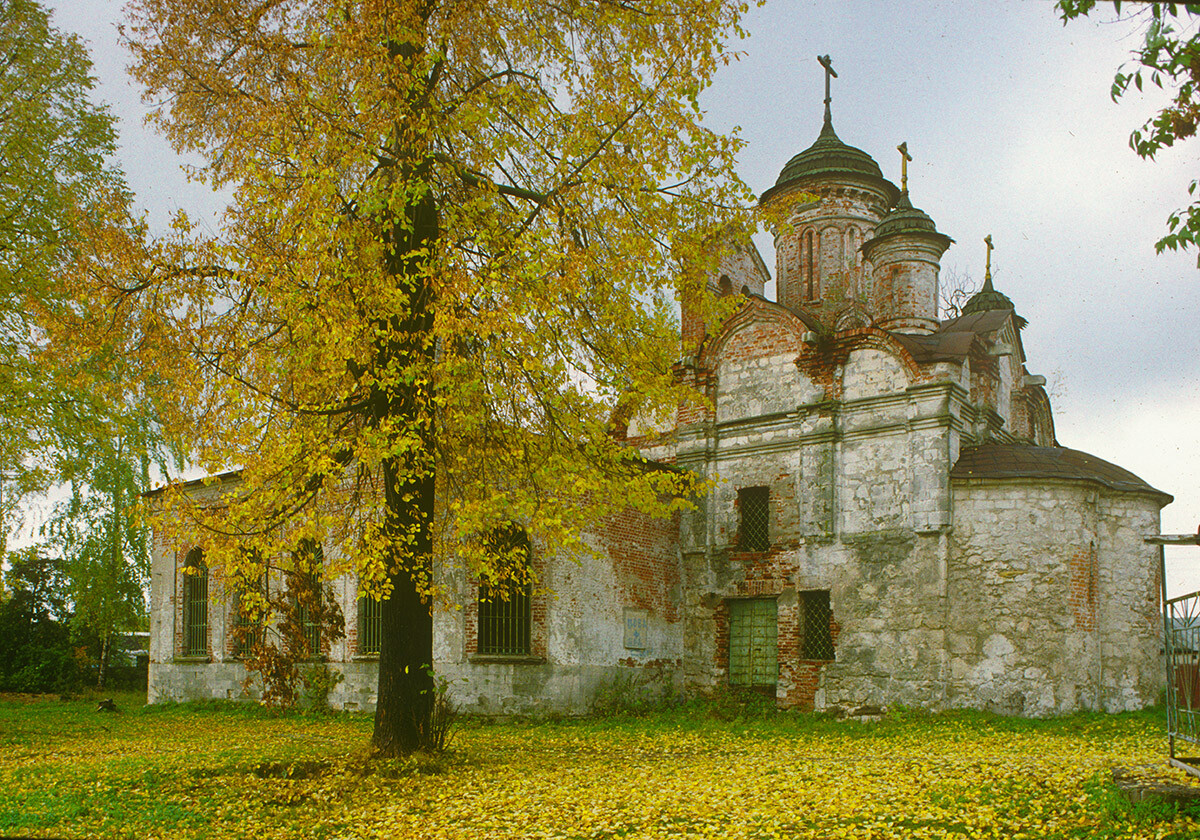
Kolomna. Church of the Conception of John the Baptist at Gorodishche. South view. October 12, 1992.
William BrumfieldPicturesquely situated at the confluence of the Kolomenka and Moscow rivers, Kolomna (with a population of around 135,000) has a rich history and distinctive regional identity. Its monasteries, which grace the approaches to the town center, have been restored and some of its merchant houses from the early 19th century have preserved their neoclassical charm.
The earliest mention of Kolomna in medieval chronicles refers to a clash in 1177 between Vsevolod the Great Nest, grand prince of Vladimir, and rival prince Gleb of Ryazan. Such local struggles were frequent among Russian princes in the 12th and early 13th centuries, but they were soon to be followed by the far more devastating Mongol invasion of 1237-41. Kolomna was overwhelmed in January 1238, despite fierce resistance. Kulkan, the youngest son of Genghis Khan, was killed during the battle for Kolomna.
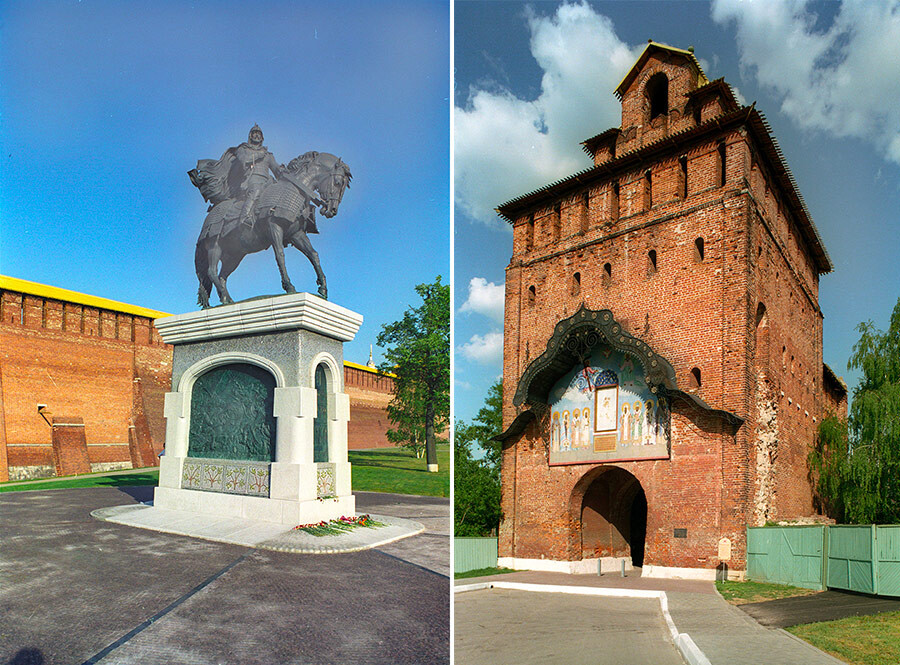
Left: Equestrian monument to Dmitry Donskoy. Background: Kolomna kremlin wall. Right: Kolomna kremlin. Spassky (Savior) Gate, also called Pyatnitsky Gate. Southwest view. May 23, 2007.
William BrumfieldFrom the beginning of the 14th century, Moscow’s princes valued Kolomna as a strategic citadel guarding its southern border. Located not far from the point where the Moscow River flows into the Oka River (the major western tributary of the Volga), Kolomna was traversed by trading routes from much of central Russia. This movement of goods and livestock through the town would create the basis for an enduring merchant culture.
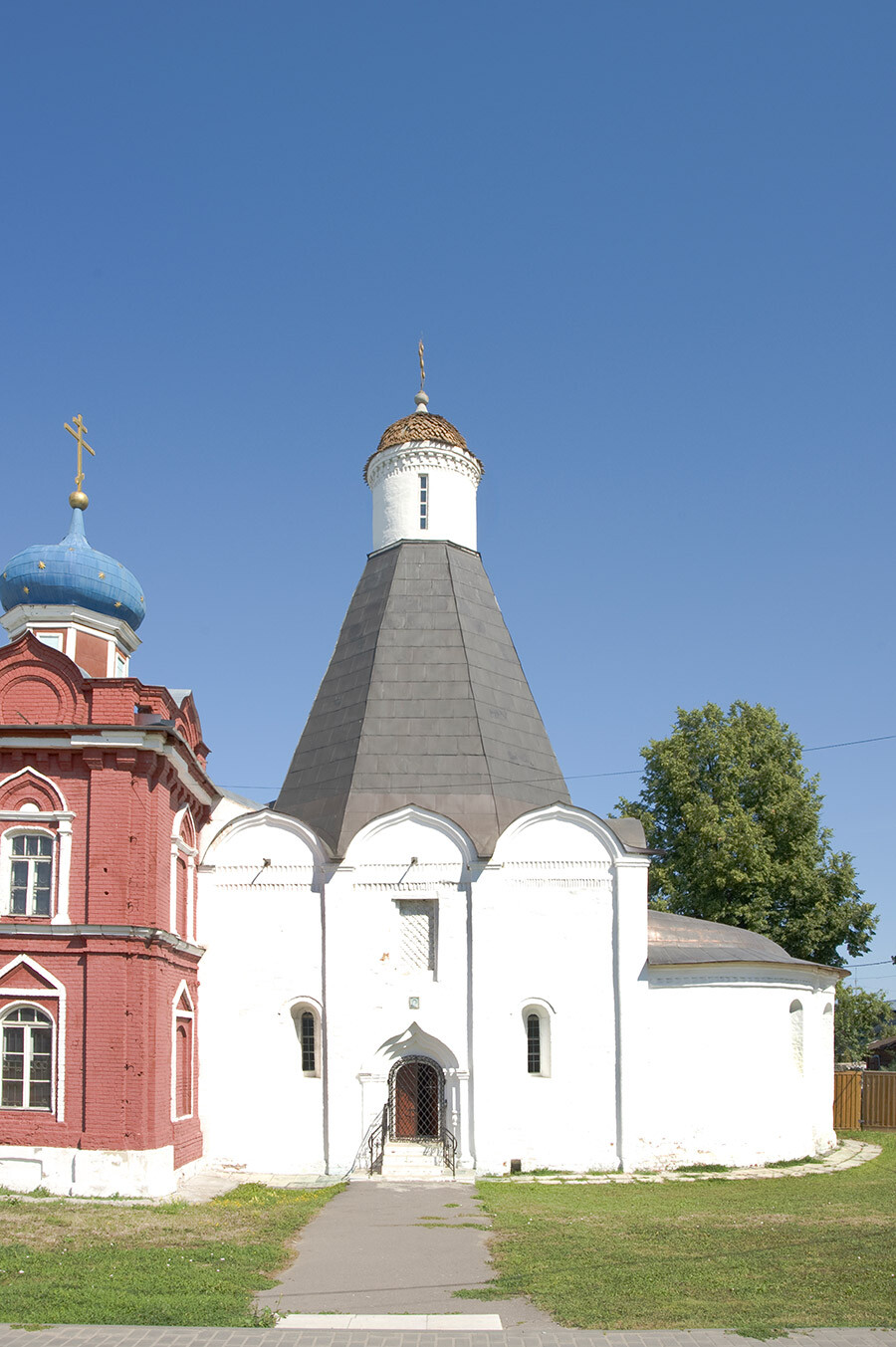
Kolomna. Church of Dormition of the Virgin, Brusensky Dormition Convent, south view. August 18, 2011.
William BrumfieldDespite its increasing prosperity, Kolomna experienced serious challenges in the 14th century, including an outbreak of plague in 1363 and looting by the army of Tatar khan Tokhtamysh in August 1382. Yet, in the same period, Kolomna proved its resilience with the construction in 1379 of its first large church, dedicated to the Dormition of the Virgin. It was in the shadow of this church - completely rebuilt in the 17th century - that Moscow’s grand prince Dmitry Donskoi held a prayer service in preparation for the eventual great victory against Tatar khan Mamai at Kulikovo Pole in September 1380.
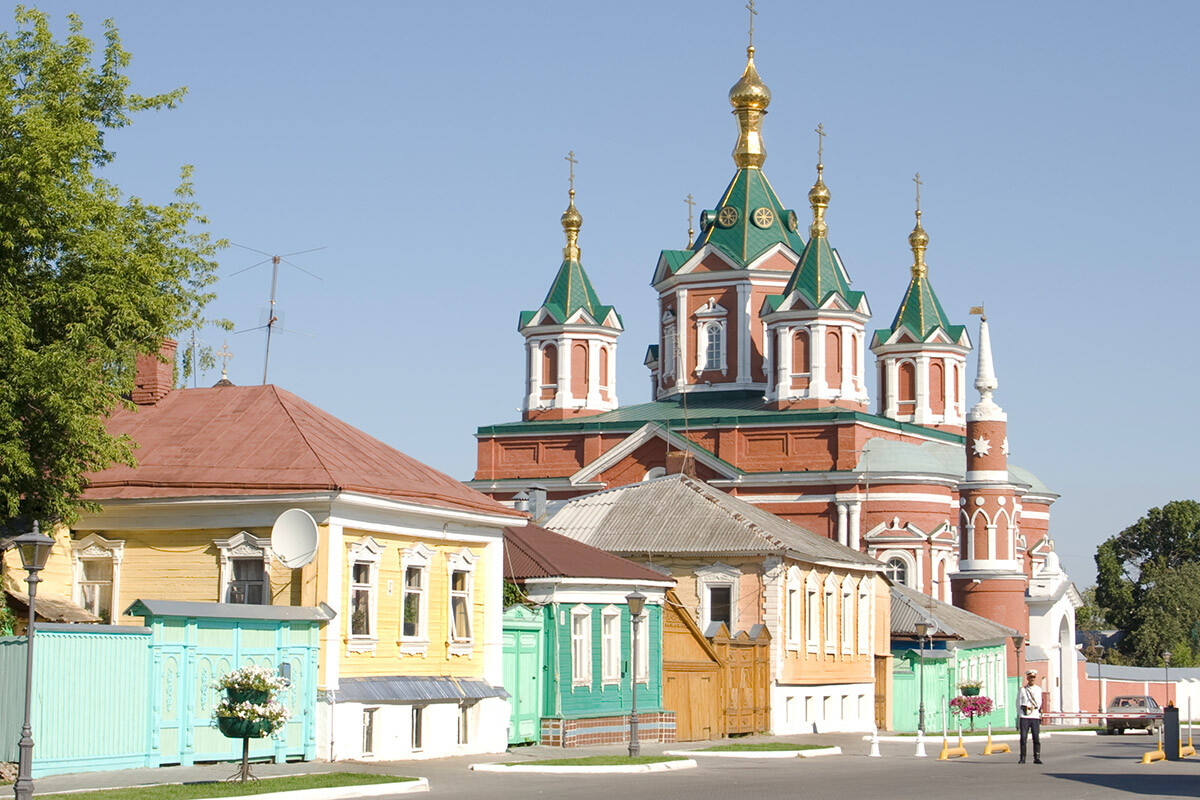
Kolomna. Wooden houses on Lazhechnikov Street. Background: Cathedral of the Elevation of the Cross, Brusensky Dormition Convent. August 18, 2011.
William BrumfieldThe earliest stone church from this period, dedicated to John the Baptist at Gorodishche, is located on the outskirts of Kolomna and has been dated to the late 14th century. The place name of this remarkable structure comes from an ancient earthen fort (aka gorodishche) on the left bank of the Kolomenka River, but, by the time of the church’s construction, the village of Gorodishche belonged to the local bishop.
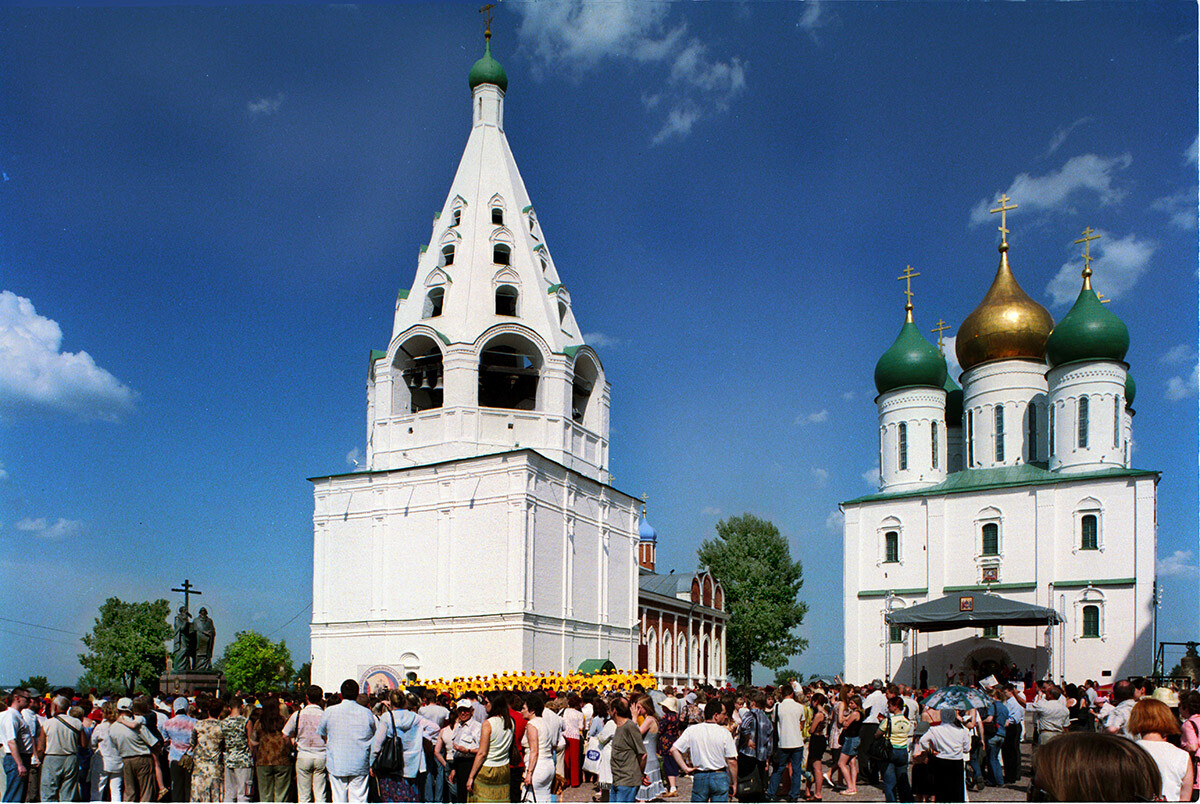
Kolomna. Unveiling of monument to Sts. Kirill & Methodius. Background: Bell tower & Cathedral of the Dormition. May 23, 2007.
William BrumfieldAlthough much rebuilt, the church's lower walls - of worn limestone - reveal the early stages of recovery of masonry architecture after the cataclysmic Mongol invasion. Apart from these intact lower walls, which include one block with a carving of a unicorn, the basic structure of the Church of John the Baptist dates from the early sixteenth century. The present bell tower was erected in 1780, as, apparently, was the wide refectory. At the beginning of this century, the light gray, roughly textured walls were covered with bright white paint. Fortunately, I was able to photograph the structure in the fall of 1992, when the picturesque texture of its walls was still untouched.
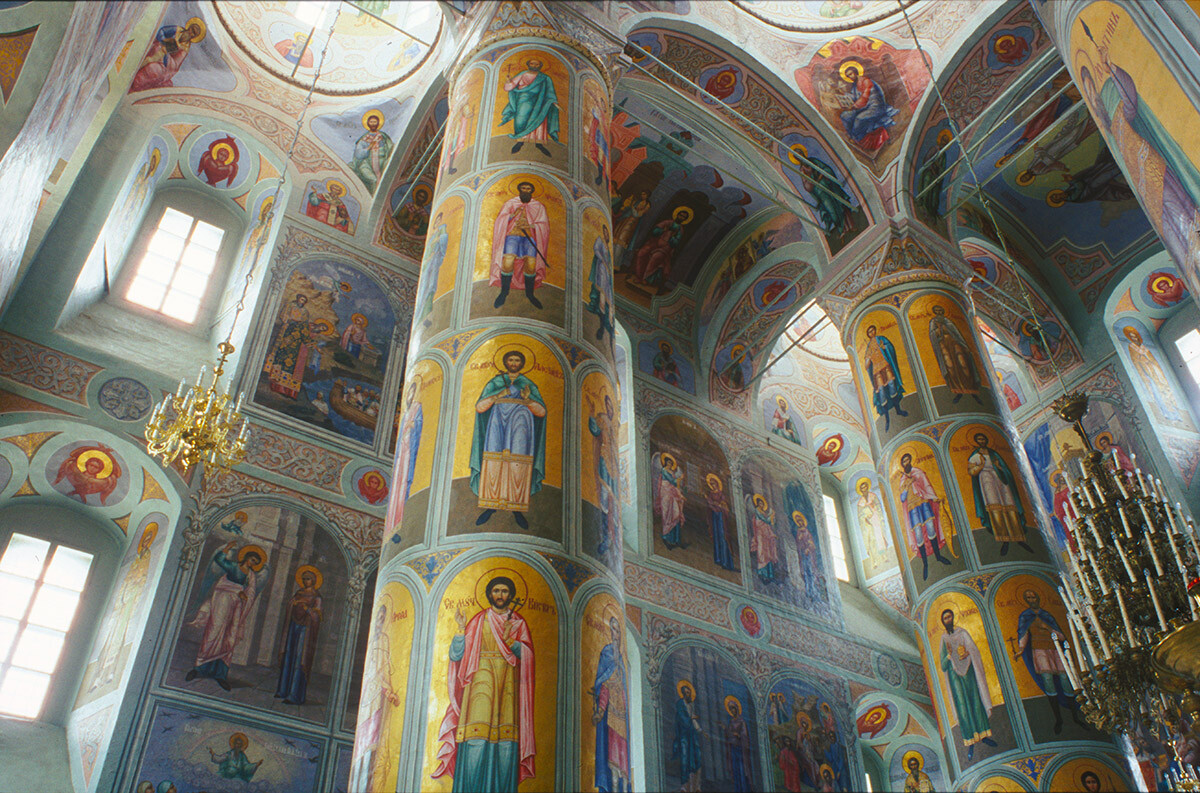
Cathedral of the Dormition. Interior, view toward west wall. December 21, 2003.
William BrumfieldDuring the 16th century, Kolomna benefited from the largess of Moscow’s Grand Prince Basil III (1479-1533), who replaced its log fortress with massive brick walls that signaled the town’s importance as a citadel on Muscovy’s southern flank. Built between 1525 and 1531 to a total length of two kilometers, these walls bear comparison with those of the Moscow Kremlin.
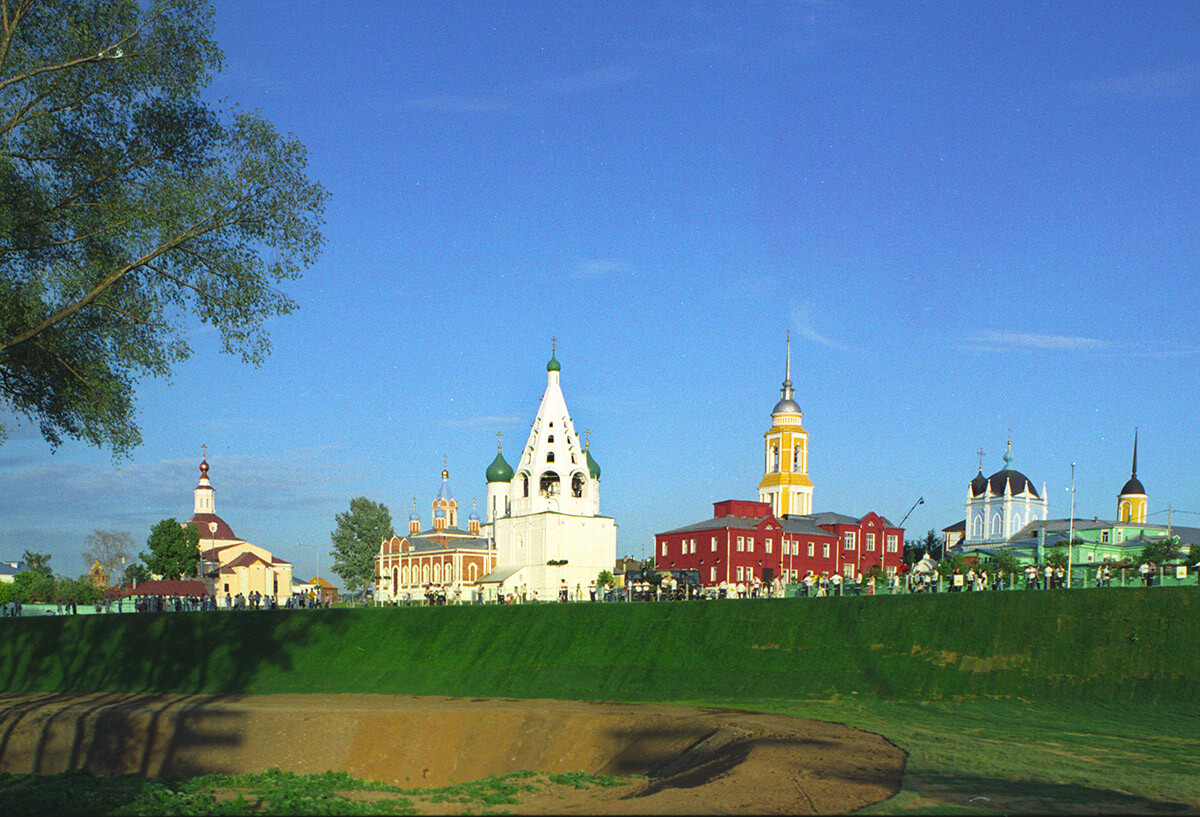
Kolomna panorama. From left: Church of Resurrection in the Fortress, Church of Tikhvin Icon of the Virgin, Bell tower & Dormition Cathedral, School No. 3, bell tower of New Golutvin Trinity Convent, Church of Intercession at New Golutvin Convent. May 24, 2007.
William BrumfieldOf the original sixteen towers, seven remain, including one gate tower. The southwest range of the walls was anchored by the massive Kolomna, or Marina, Tower. The last serious military ordeal faced by Kolomna occurred in the early 17th century, when the town was assaulted by various factions during a period of dynastic chaos known as the ‘Time of Troubles’.
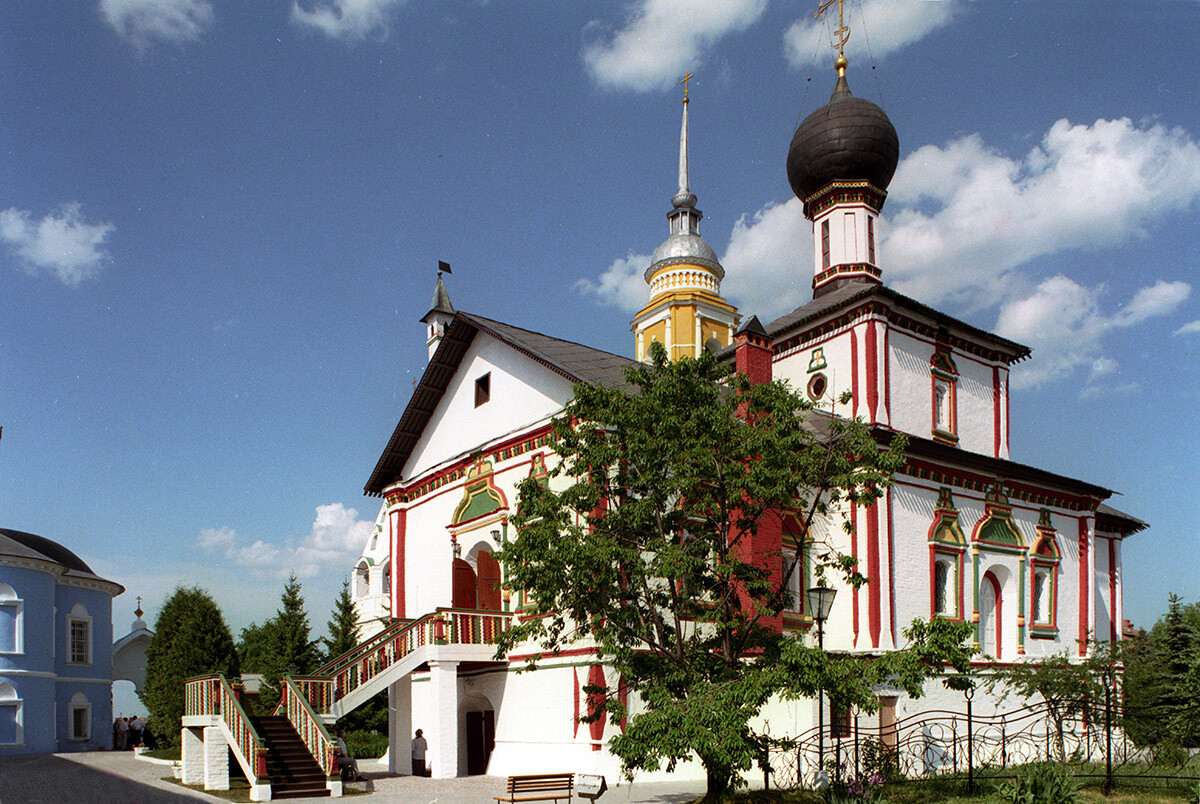
Church of Intercession at New Golutvin Convent, southwest view. May 23, 2007.
William BrumfieldWithin the Kolomna walls is the Brusensky Dormition Monastery, converted into a convent after the devastation of the Time of Troubles. Its distinctive mid-16th-century Church of the Dormition of the Virgin was erected in the 1550s to commemorate Ivan the Terrible’s 1552 conquest of Kazan - as was St. Basil’s in Moscow. Adjacent to the Dormition Church is the brightly painted Cathedral of the Elevation of the Cross, built exactly three centuries later (1852-55) in the Russo-Byzantine style.
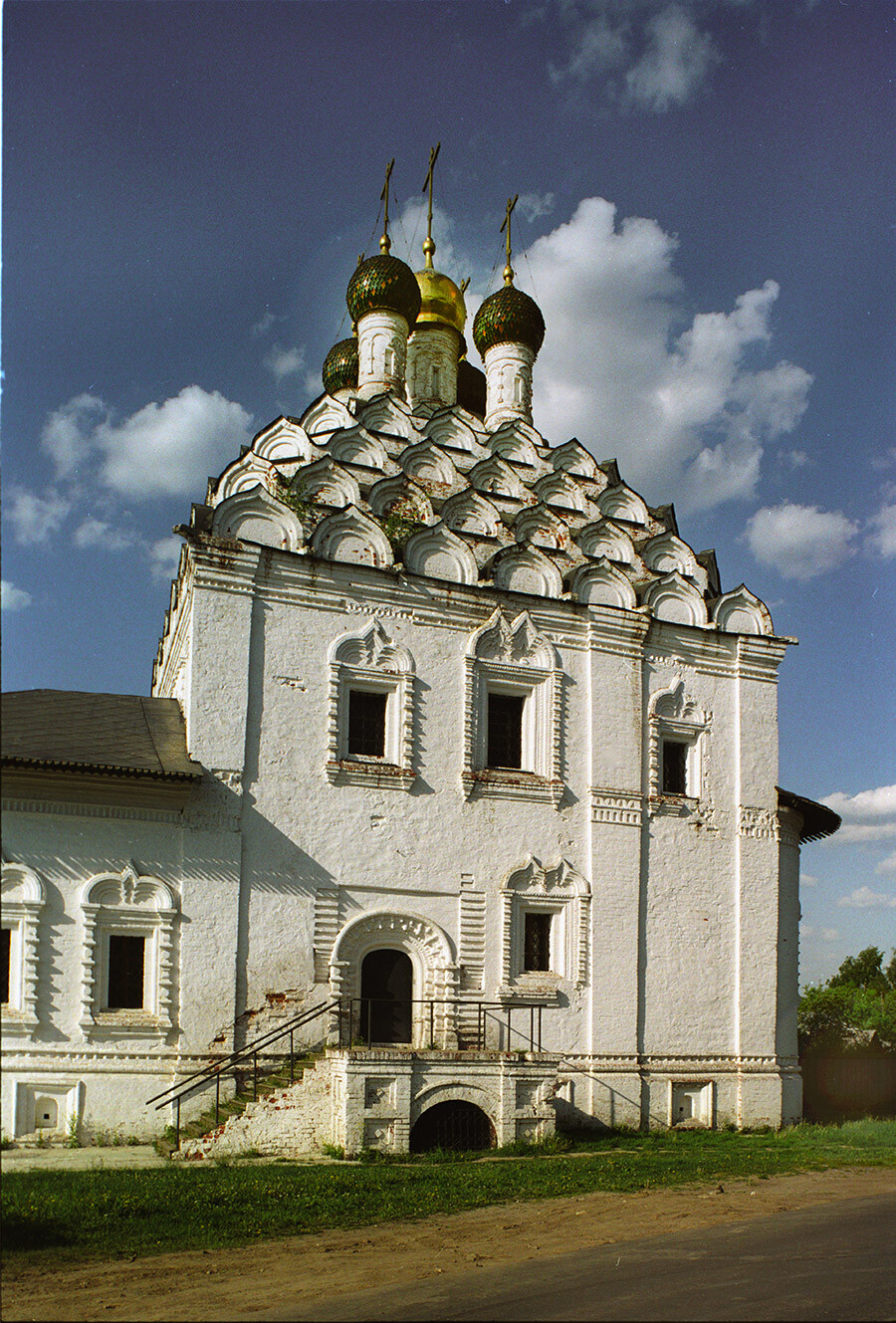
Church of the Resurrection at Posad (Church of St. Nicholas Posadsky). South view. May 23, 2007.
William BrumfieldA few paces beyond, along an attractive pedestrian street, stands Kolomna’s main cathedral, also dedicated to the Dormition. Rebuilt between 1672 and 1682, its structure follows the traditional design of large Russian churches, with six columns supporting the interior space and five onion domes above. The interior has been well preserved, with a late baroque iconostasis from the 1770s and an impressive set of wall paintings in a late academic style executed in oil during the 1880s and based on an earlier set from 1804.

Bell tower of Church of St. John the Divine, flanked by trading arcade. View from Lazhechnikov House. July 11, 2009.
William BrumfieldAdjacent to the cathedral is a massive bell tower, built in 1692. Across from the Dormition Cathedral are the walls and bell tower of the New Golutvin Convent, with its brightly painted Church of the Trinity (1705).
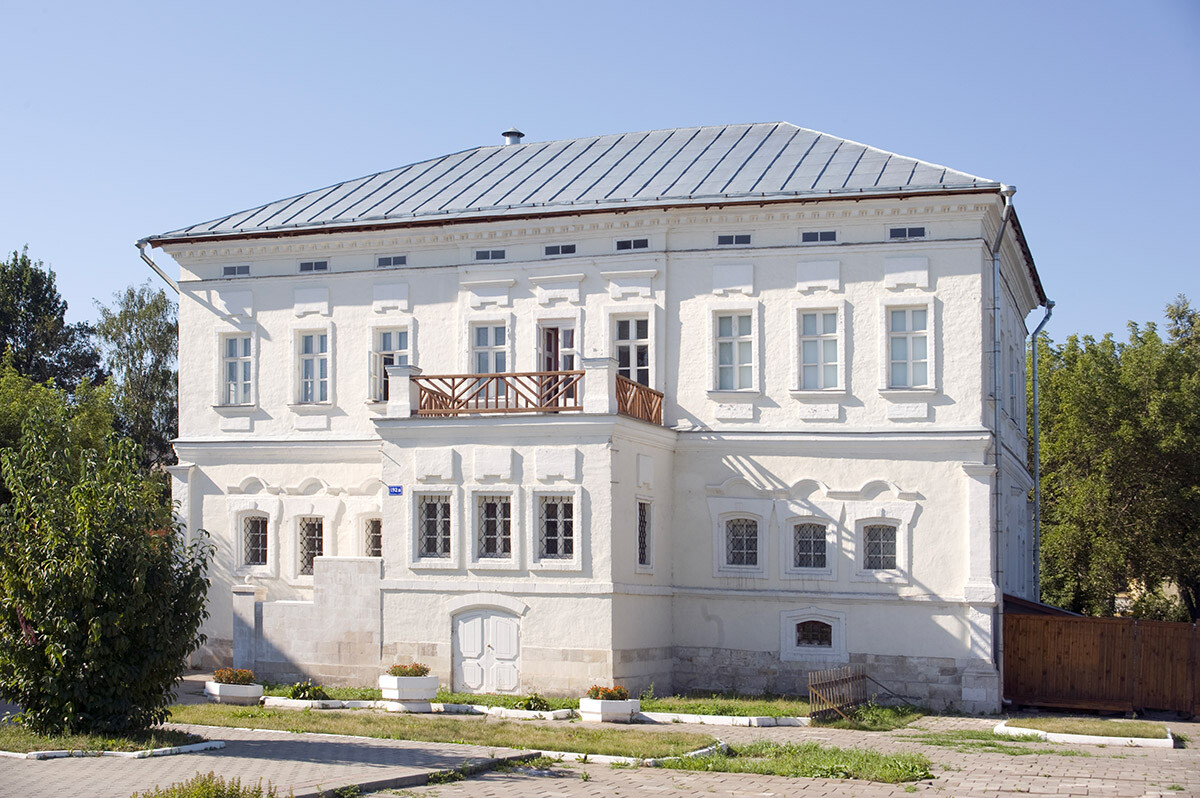
Lazhechnikov House. August 18, 2011.
William BrumfieldKolomna also has numerous parish churches. The most picturesque of these is the Church of the Resurrection “na Posade”, also known as the Church of Saint Nicholas Posadsky, which was originally built in 1716, then substantially modified in the 1790s, before being restored to its earlier form in the 1970s. This distinctive structure, with its decorative gables, represents an echo of ornamented church architecture in Moscow during the 17th century. Nearby is the Museum of Pastila, an apple confectionery for which Kolomna is widely known.
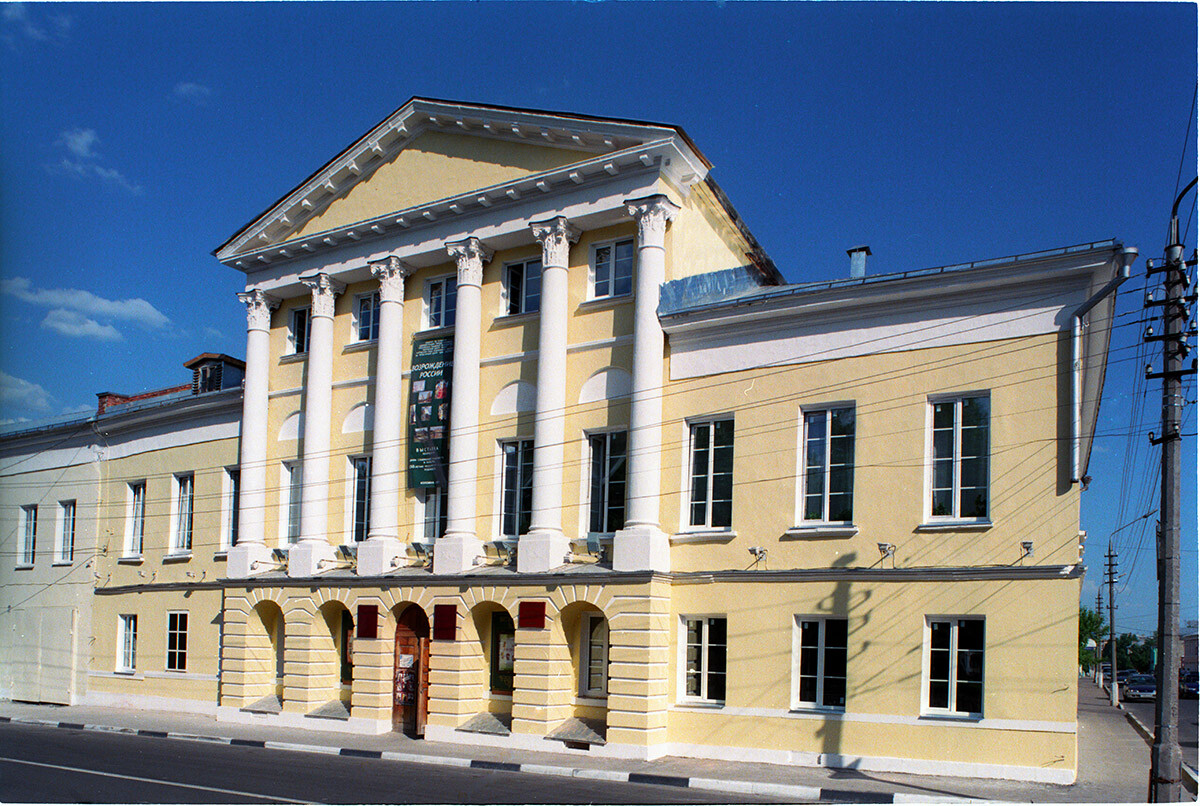
Ozerov House, Red Army Street 2. May 23, 2007.
William BrumfieldKolomna rivals Torzhok with its array of neoclassical monuments. The most visible of these is the Church of St. John the Divine, located on the town’s main square and originally built in 1733-58. The church gained its imposing neoclassical facades in 1829-35. Its soaring bell tower (1826-46) became the center of a trading arcade that enveloped the church structure—an ingenious combination of commercial and religious architecture.
In addition to its churches and bell towers, Kolomna has historic districts with houses from the 19th century. Among the neoclassical houses restored in the town center, the most notable is the Lazhechnikov House, now a museum devoted to one of Russia’s early nineteenth-century novelists.
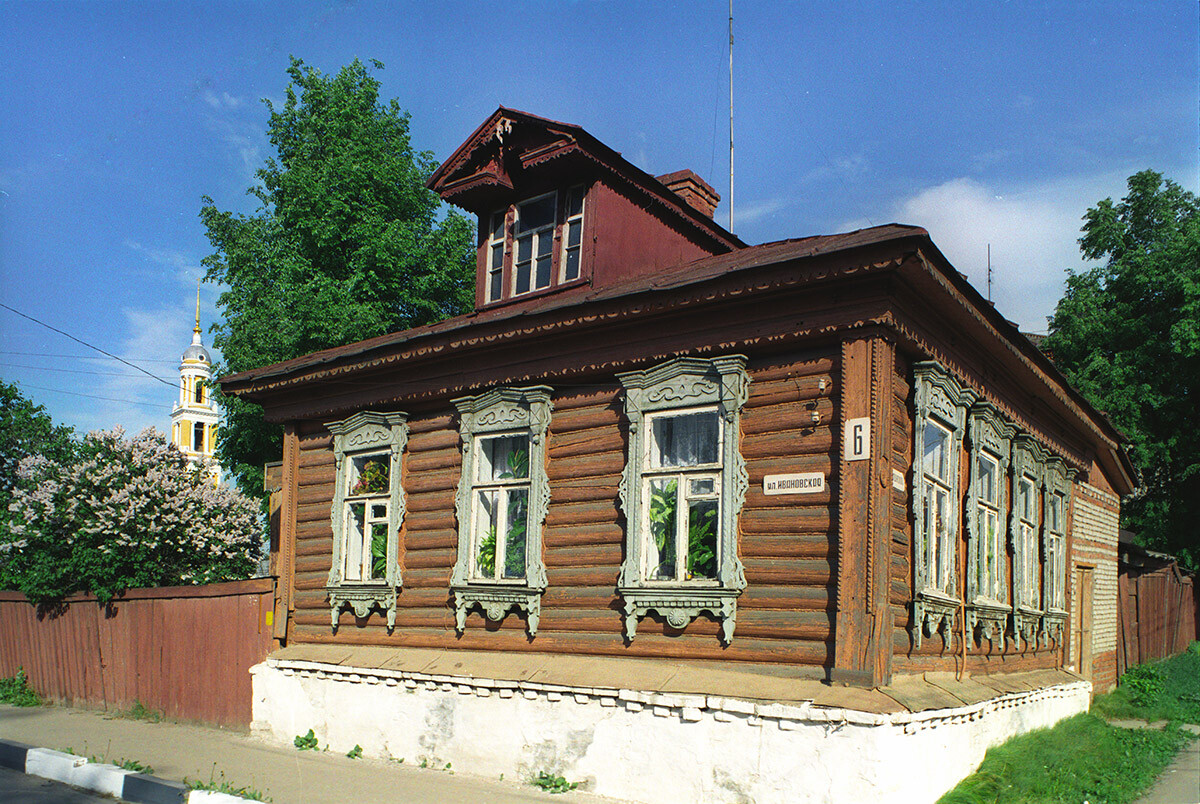
Log house with lilac in bloom, corner of Ivanov Street 6 & Grazhdansky Street. May 24, 2007.
William BrumfieldAlso preserved in Kolomna are large numbers of wooden houses, many of them with ornate window surrounds. Some of these houses near the kremlin are associated with 20th-century writers such as Boris Pilnyak and Anna Akhmatova.
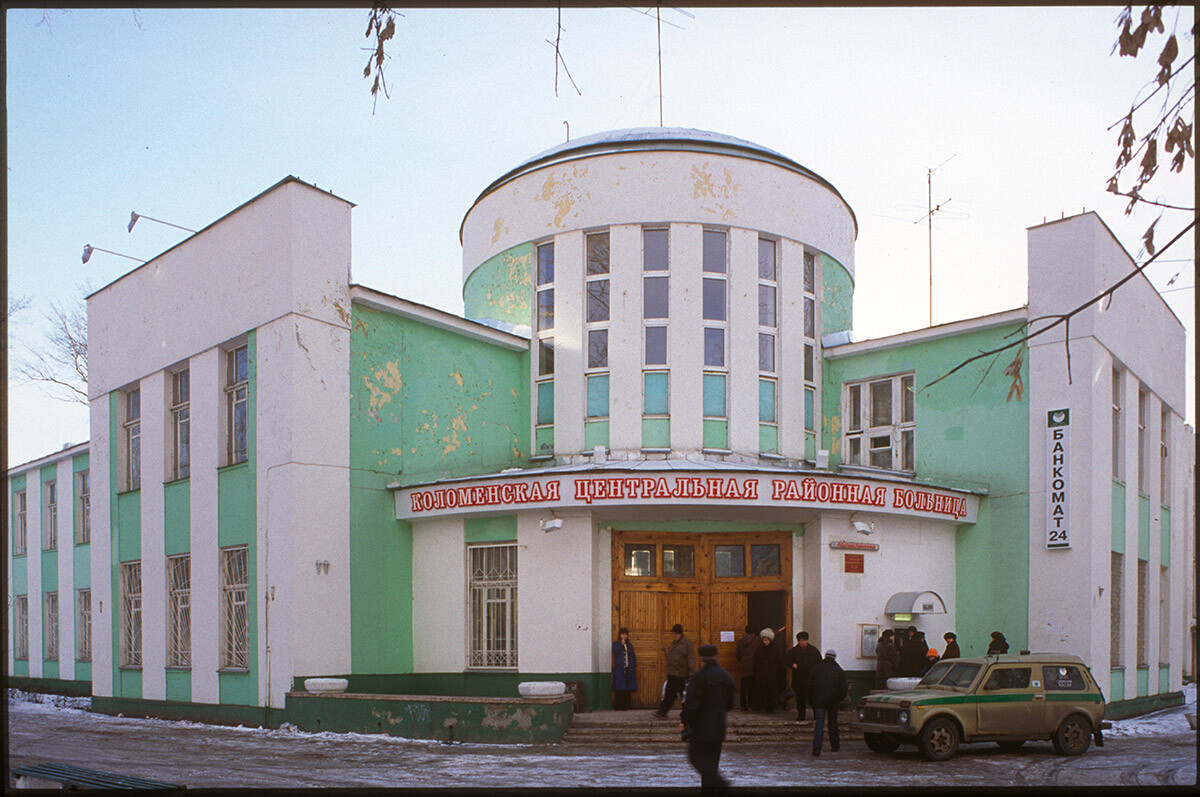
Kolomna Central Regional Hospital, October Revolution Street 318. Excellent example of Constructivist architecture (completed 1930). December 26, 2003.
William BrumfieldDuring the Soviet period new forms of housing appeared, particularly for workers at the Kolomna Factory, founded in 1863 and subsequently a major producer of locomotives. Examples of housing projects sponsored by the Kolomna Factory in the 1920s can still be seen on the main thoroughfare, October Revolution Street. However, many workers preferred to live in wooden houses with a small garden plot, and such houses continued to be built throughout the Soviet period. Kolomna also has interesting examples of avant-garde Constructivist architecture, built in support of the industrialization campaign of the early Soviet period.
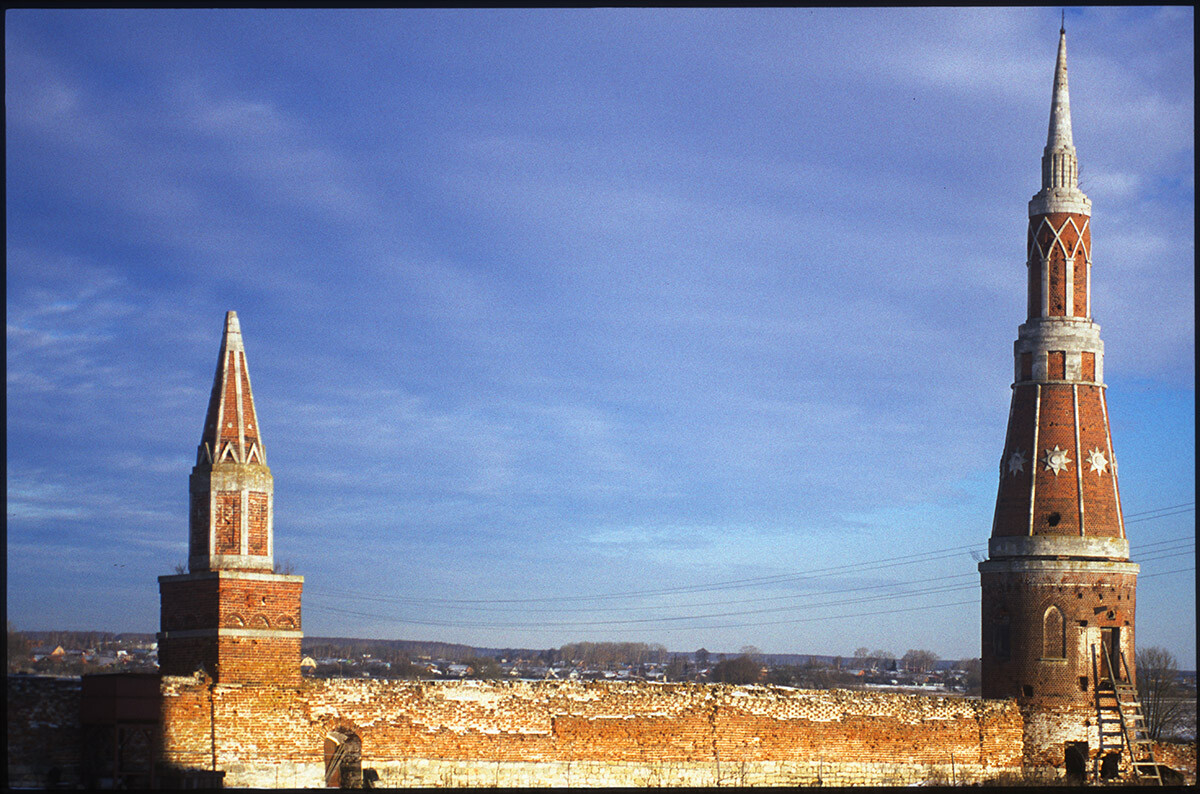
Old Golutvin Epiphany Monastery. South wall & towers in Gothic Revival style. December 26, 2003.
William BrumfieldOn the outskirts of the town are two additional monastic ensembles, both apparently established by Dmitry Donskoy in the 1380s. The Epiphany-Golutvin Monastery, known after 1800 as the Old Golutvin Monastery, is located near the confluence of the Moscow and Oka Rivers. The most colorful feature of the Old Golutvin Monastery is its wall towers, Gothic Revival fantasies built of red brick with limestone details in the late 1770s. The Pseudo-Gothic style appeared in Russia during the reign of Catherine the Great as a reflection of the empress’s Anglomania and her interest in medieval Russian culture.
Across the Moscow River and to the north of the Kolomna Kremlin is the Bobrenev-Nativity Monastery. Although founded in the late 14th century, its current churches date from the late 18th and 19th centuries. It, too, is enclosed with Gothic Revival walls from the 1790s.
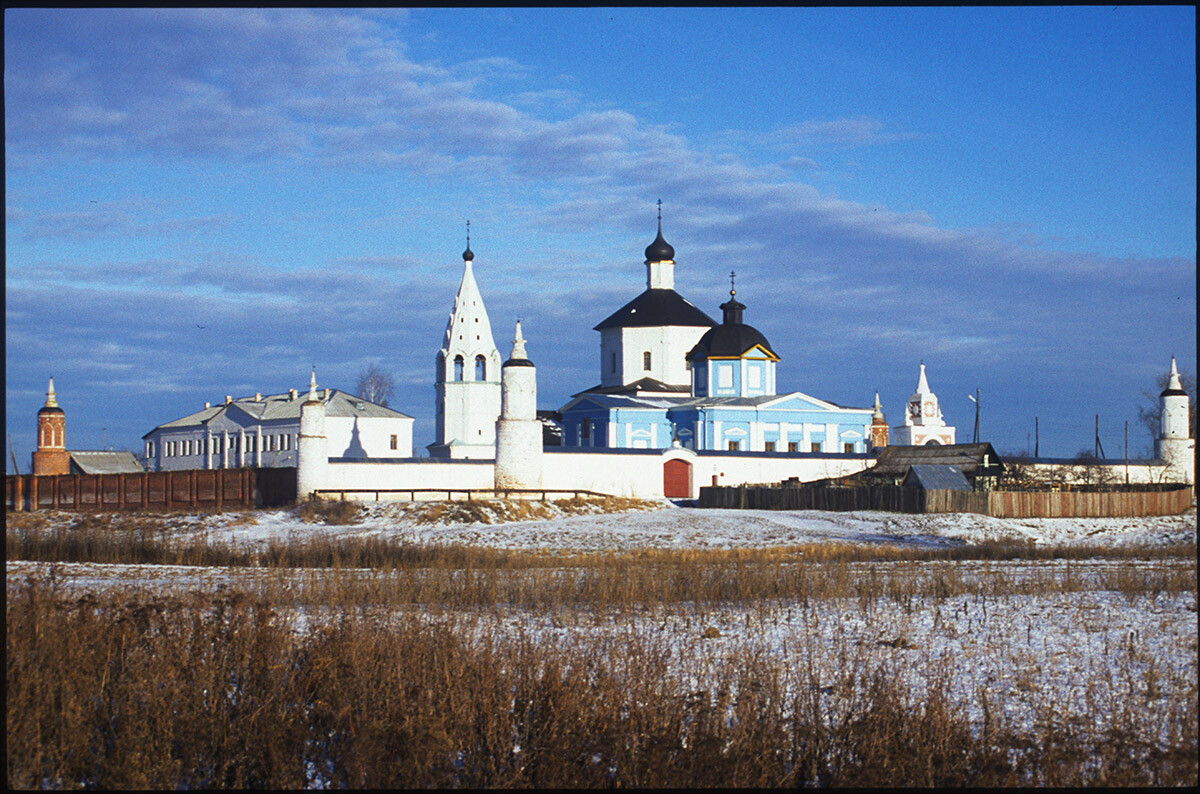
Old Bobrenevo. Bobrenev Nativity of the Virgin Monastery, southwest view. From left: walls & corner towers in Gothic Revival style, abbott's residence, bell tower & Cathedral of Nativity of the Virgin, Church of the St. Theodore Icon of the Virgin. December 26, 2003.
William BrumfieldContemporary Kolomna’s most notable landmark is popularly called the Ice Palace, a community center and modern arena for ice sports. The choice of site was controversial - down the slope from the kremlin. The architects attempted to mitigate the visual clash by designing the arena with a suspended membrane roof whose low silhouette is nestled at the bottom of the river terrain.
The construction of a bypass highway has relieved the historic Kolomna center of through traffic on the way to the city of Ryazan. Like many other Russian towns, Kolomna is seeking a balance between economic development and the preservation of its rich architectural heritage.
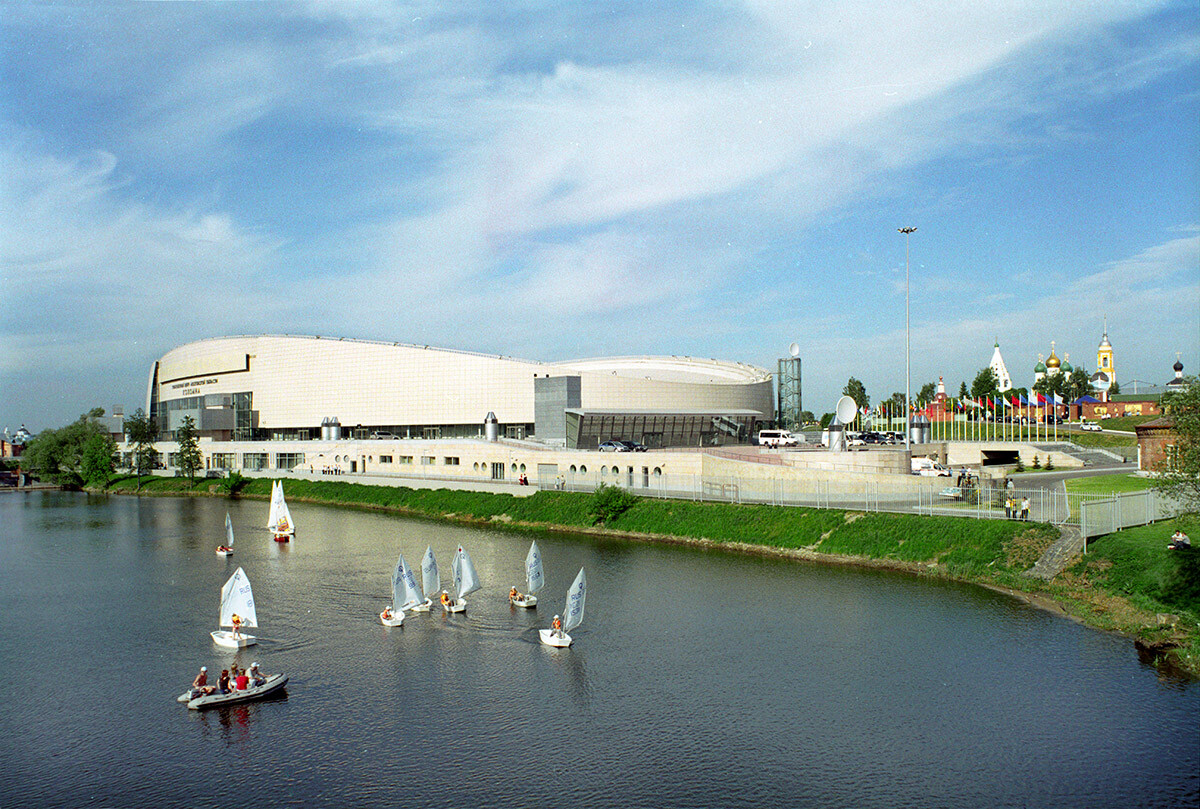
Ice Racing Arena on Kolomenka River. Background: Bell tower & Cathedral of the Dormition. May 24, 2007.
William BrumfieldIn the early 20th century, Russian photographer Sergey Prokudin-Gorsky developed a complex process for color photography. Between 1903 and 1916 he traveled through the Russian Empire and took over 2,000 photographs with the process, which involved three exposures on a glass plate. In August 1918, he left Russia and ultimately resettled in France where he was reunited with a large part of his collection of glass negatives, as well as 13 albums of contact prints. After his death in Paris in 1944, his heirs sold the collection to the Library of Congress. In the early 21st century the Library digitized the Prokudin-Gorsky Collection and made it freely available to the global public. A few Russian websites now have versions of the collection. In 1986 the architectural historian and photographer William Brumfield organized the first exhibit of Prokudin-Gorsky photographs at the Library of Congress. Over a period of work in Russia beginning in 1970, Brumfield has photographed most of the sites visited by Prokudin-Gorsky. This series of articles juxtaposes Prokudin-Gorsky’s views of architectural monuments with photographs taken by Brumfield decades later.
If using any of Russia Beyond's content, partly or in full, always provide an active hyperlink to the original material.
Subscribe
to our newsletter!
Get the week's best stories straight to your inbox